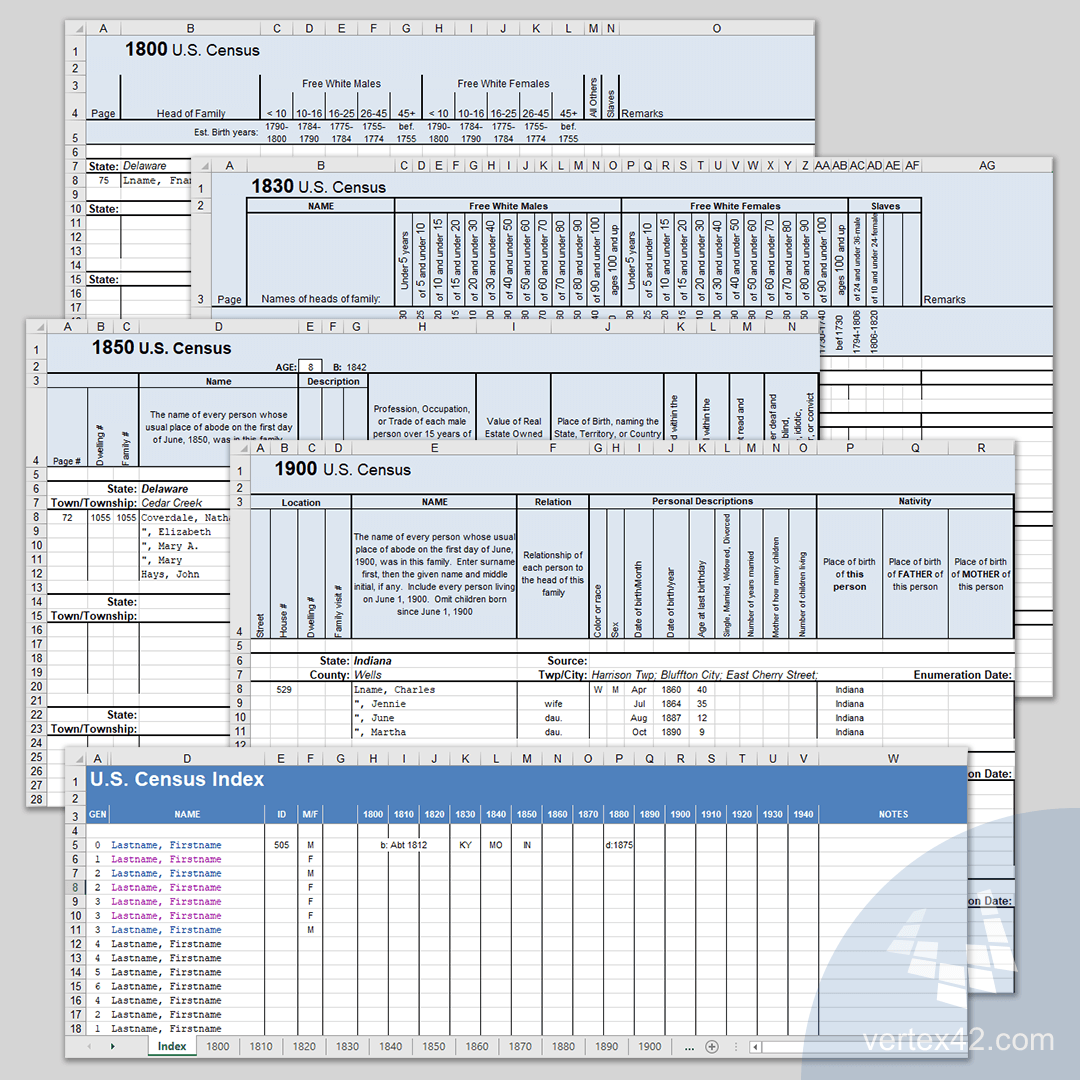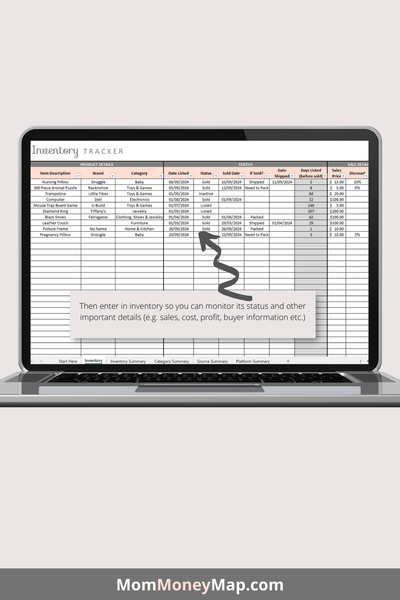
Navigating the Stockroom and the Stroller: Business Inventory for Mom-Owned Businesses, Informed by US Census Data
In the vibrant tapestry of the American economy, a powerful and increasingly prominent thread is woven by mom-owned businesses. These enterprises, often born from a blend of passion, necessity, and a desire for flexibility, represent a significant and growing force. While the motivations behind their inception are diverse, the operational challenges they face are universal to all businesses, none more critical than effective inventory management. For mom-entrepreneurs, balancing the demands of family life with the complexities of managing stock can be a particularly nuanced dance. This article delves into the intricacies of business inventory specifically for mom-owned businesses, highlighting how data from the U.S. Census Bureau can provide invaluable insights to optimize operations and foster sustainable growth.
The Rise and Impact of Mom-Owned Businesses
The landscape of American entrepreneurship has been significantly shaped by women, and mothers in particular. The U.S. Census Bureau’s various economic surveys, such as the Annual Business Survey (ABS) which replaced the Survey of Business Owners (SBO) in 2018, consistently reveal the substantial contribution of women-owned firms to the national economy. These surveys collect data on the characteristics of businesses and business owners, including gender, race, ethnicity, and veteran status.
While precise figures for "mom-owned" businesses are not directly disaggregated from "women-owned" in all Census publications, the broader trend is clear: women are starting businesses at a higher rate than ever before, often driven by the desire for work-life integration, control over their schedules, and the pursuit of a passion project that can accommodate family responsibilities. These businesses span a wide array of industries, from e-commerce boutiques and handmade crafts to consulting services, educational platforms, and local retail shops. They contribute billions to the economy, create jobs, and foster innovation within their communities.
For many mom-entrepreneurs, their business often starts as a home-based venture, utilizing spare rooms, garages, or dedicated office spaces within their residences. This initial setup, while offering flexibility and lower overheads, immediately introduces unique considerations for inventory management.
Understanding Business Inventory: More Than Just Stock
At its core, business inventory refers to the goods a company holds for sale, or the components used to produce those goods. It typically comprises three main categories:
- Raw Materials: Components or ingredients used in the manufacturing process.
- Work-in-Progress (WIP): Partially finished goods that are still undergoing production.
- Finished Goods: Products ready for sale to customers.
Effective inventory management is a delicate balancing act. Too much inventory ties up capital, incurs storage costs, risks obsolescence, and can lead to waste. Too little inventory, on the other hand, can result in stockouts, lost sales, frustrated customers, and damage to brand reputation. The goal is to maintain optimal inventory levels that meet customer demand without incurring excessive costs or risks.
Key considerations for any business regarding inventory include:
- Demand Forecasting: Predicting future customer demand.
- Lead Time: The time it takes for suppliers to deliver goods.
- Carrying Costs: Expenses associated with holding inventory (storage, insurance, spoilage, obsolescence).
- Ordering Costs: Expenses associated with placing and receiving an order.
- Stockout Costs: The financial and reputational impact of not having an item in stock.
Unique Inventory Challenges for Mom-Owned Businesses
While the principles of inventory management are universal, mom-owned businesses, particularly those operating on a smaller scale or from home, often encounter specific challenges:
- Space Constraints: Home-based businesses typically lack dedicated warehouse facilities. Inventory might share space with family belongings, requiring meticulous organization and often limiting the volume of stock that can be held. This often means smaller batch orders and more frequent replenishments.
- Time Management: Juggling business operations with childcare, household duties, and personal commitments leaves limited time for complex inventory tasks. Manual tracking, frequent physical counts, and meticulous organization can become overwhelming.
- Capital Constraints: Many mom-owned businesses are bootstrapped or self-funded, meaning capital is often limited. Tying up significant funds in inventory can strain cash flow, making it difficult to invest in other areas of the business or manage unexpected expenses. This often necessitates a "lean" inventory approach.
- Scalability Issues: As a business grows, so does its inventory needs. Scaling inventory from a home office or garage to a dedicated facility, or managing a sudden surge in demand, can be a logistical nightmare without robust systems in place.
- Personalization and Niche Products: Many mom-entrepreneurs thrive on creating unique, handmade, or customized products. This can lead to managing a wide variety of SKUs (Stock Keeping Units), each with potentially low volume, making forecasting and stock rotation more complex than for mass-produced items.
- Emotional Investment: For many mom-owned businesses, products are often an extension of their passion and creativity. This can sometimes lead to a reluctance to liquidate slow-moving items, even when financially prudent.
Leveraging US Census Data for Smarter Inventory Decisions
While the U.S. Census Bureau does not provide direct, granular data on the inventory levels of individual small businesses, its broader economic data offers invaluable context and insights that mom-entrepreneurs can use to make more informed inventory decisions.
-
Market Research and Demand Forecasting:
- Demographic Data: The Decennial Census and American Community Survey (ACS) provide detailed demographic information (age, income, family size, education, etc.) at various geographic levels (state, county, city, zip code). A mom-entrepreneur selling children’s clothing, for example, can use this data to identify areas with a high concentration of young families and target her marketing efforts, thereby improving her demand forecasts for specific product lines in those regions.
- Consumer Spending Patterns: While not directly from the Census, other government agencies (like the Bureau of Labor Statistics) use Census data as a base for surveys on consumer expenditure. Understanding general spending habits in her target demographic can help a mom-owner anticipate seasonal peaks and valleys in demand.
-
Industry Trends and Benchmarking:
- Economic Census: Conducted every five years, the Economic Census provides a comprehensive look at American businesses. It offers data on the number of establishments, employment, payroll, and revenue by industry (NAICS codes). A mom-entrepreneur in the "E-commerce and Mail-Order Houses" (NAICS 454110) or "Handicraft Stores" (NAICS 451130) sector can use this to understand the overall growth or contraction of her industry, the average size of firms, and revenue trends. This macro-level understanding helps gauge the market’s capacity and potential for her products, indirectly influencing inventory strategies (e.g., if the industry is booming, she might feel more confident in carrying slightly higher safety stock).
- Annual Business Survey (ABS): This survey provides annual data on selected economic and demographic characteristics for businesses and business owners. It can reveal trends in specific sectors, average firm revenues, and employment figures, which can help a mom-owner benchmark her business’s performance and anticipate industry-wide shifts that might impact supplier lead times or customer demand.
-
Geographic Analysis and Supplier Sourcing:
- Business Patterns: This annual series from the Census Bureau provides establishment data by NAICS code, geographic area, and employment size. A mom-entrepreneur looking to source raw materials or find a local manufacturer might use this to identify areas with a concentration of relevant suppliers or manufacturers, potentially reducing lead times and shipping costs.
- Community Data: Understanding the economic health of a specific community through Census data can inform decisions about local retail presence or participation in local markets. If a community is growing and economically robust, it might support a larger local inventory.
-
Identifying Gaps and Opportunities:
- By analyzing the distribution of businesses by industry and geography, a mom-entrepreneur can identify underserved markets or niches. If she sees a high demand for a product in an area with few existing suppliers (as inferred from demographic data and business patterns), she might adjust her inventory to capitalize on that opportunity.
Strategies for Effective Inventory Management for Mom-Entrepreneurs
Armed with a better understanding of her market from Census data, a mom-entrepreneur can implement practical inventory strategies:
- Embrace Technology (Even Simple Solutions): Start with robust spreadsheets for tracking, then graduate to simple inventory management software or POS systems with inventory features. This automates tracking, reduces errors, and frees up valuable time.
- Prioritize Demand Forecasting: Utilize sales data, seasonal trends, and insights from Census demographics to predict future demand. Accurate forecasting reduces the risk of overstocking or stockouts.
- Implement Just-In-Time (JIT) Principles: Especially for customized or handmade goods, focus on ordering or producing items only as needed. This minimizes carrying costs and reduces the risk of obsolescence. Dropshipping or print-on-demand models can also be valuable for certain product lines to avoid holding physical inventory altogether.
- Develop Strong Supplier Relationships: Negotiate favorable terms, understand lead times, and build trust with reliable suppliers. Good relationships can be crucial during unexpected demand spikes or supply chain disruptions.
- Regular Audits and Cycle Counting: Even with software, periodic physical counts are essential to ensure accuracy. Cycle counting (counting a small subset of inventory regularly) is less disruptive than a full annual count.
- Optimize Storage Solutions: Utilize vertical space, clear labeling, and efficient shelving systems to maximize limited home-based storage. Keep business inventory separate from personal items.
- Cash Flow Management: Link inventory decisions closely with cash flow projections. Understand the cost of holding inventory versus the potential profit from sales. Prioritize fast-moving items that generate quick returns.
- Understand Your SKUs: Analyze which products are your top sellers (A-items), which are moderately popular (B-items), and which are slow-moving (C-items). Focus your inventory efforts and capital on A-items, and strategically manage B and C items to avoid dead stock.
Conclusion
Mom-owned businesses are more than just economic units; they are often deeply personal ventures that reflect the ingenuity, resilience, and dedication of their founders. Effective inventory management is not merely a logistical chore but a strategic imperative that underpins their sustainability and growth. By understanding the unique challenges they face and proactively leveraging the wealth of information provided by the U.S. Census Bureau – from demographic insights to industry trends – mom-entrepreneurs can transform inventory from a potential headache into a powerful asset.
The Census data, while not offering direct inventory metrics, paints the broader economic and demographic canvas upon which these businesses operate. It empowers mom-owners to make data-driven decisions about their target markets, product offerings, and ultimately, how much stock to keep on hand. As these businesses continue to flourish, their ability to master the art of inventory management, informed by robust data and tailored strategies, will be key to their continued success, allowing them to balance the demands of the stockroom with the joys of the stroller, and contribute meaningfully to the nation’s economic vitality.
![]()

